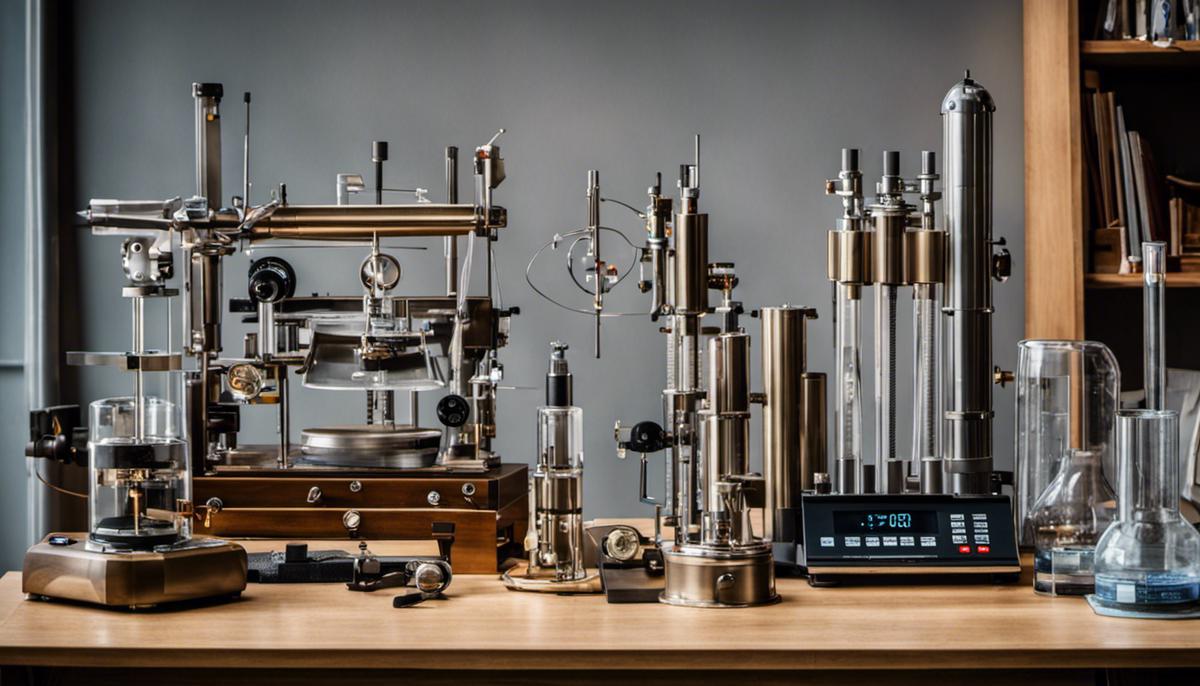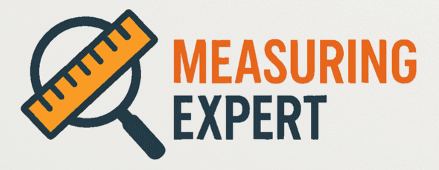In the intricate world of science, the role of measurements is indispensable. Bridging the gap between theoretical concepts and real-world applications, scientific measurements provide a concrete basis for our understanding of the universe. From the basic calculations that govern our day-to-day activities to the complex calculations that unravel the secrets of quantum mechanics, every scientific discipline is deeply rooted in accurate and precise measurements. The aim of this discussion is to delve deeper into understanding the nature, significance, and applications of scientific measurements, demystifying a realm often deemed complicated by those on the outside. Additionally, we will focus on the methodologies employed in the measurement process, and how these measurements translate into real-world cases.
Understanding Scientific Measurements
Titillating the Curious Mind: Unraveling the Intricacies of Scientific Measurements
The tantalizing world of science is brimming with empirical investigations and theoretical explorations, punctuated by the omnipresence of scientific measurements. Often, an untrained eye might perceive these measures as traffic posts with competing numeric values jostling for dominion. However, the true essence of scientific measurements extends well beyond the numbers, stringently constructed within the fortified walls of objectivity, accuracy, and precision.
Scientific measurements serve as the bedrock for the edifice of science; they afford the structure of objectivity and standardization, deflecting the pitfall of subjectivity. It is through the means of quantification that we can relish and comprehend the sublime symphonies of the universe. Therein lies the first hint to grasping the essence of scientific measurements: viewing them as unifying metrics that enables consistent comparisons across space and time.
However, objectivity alone does not suffice to fully appreciate these measurements. Both the precision and accuracy of scientific measurements deserve emphasis. Precision, the repeatability of the measure under constant conditions, ensures that the scientific enterprise doesn’t collapse under the constraints of human fallibility. Conversely, accuracy is an indicator of how close a measurement aligns to the true value. This duo of precision and accuracy, then, becomes the hallmark, the very essence of a good scientific measure.
Navigation through the arcane labyrinth of scientific measurements also necessitates understanding the importance of units. Units add meaning to measurements- they are vital signposts directing the interpretation of recorded observations. They act as the binding fabric, holding the raw numbers in the required context, thus sparing scientific narratives from descending into chaos.
Understanding the pervasive role of uncertainty in scientific measurements is crucial, too. Contrary to popular belief, science is sensational in its embrace of uncertainty. The concept of error analysis flag-bearers this core principle that scientific measurements are seldom absolute and acknowledges the inescapable presence of certainties’ alter ego-uncertainty.
Furthermore, the Gaussian curves or bell curves often associated with a set of scientific measurements illuminate an inherent play of randomness within the structure of preciseness. They portray the predictability of the occurrence of a specific measurement, encapsulating the inherent variance within an empirical structure.
Lastly, the art of significant figures illustrates the sentinel of honesty in scientific measurements. This system pledges against the artificial inflation of precision, thus ensuring transparency and integrity of the data collected.
So, as we delve into the captivating realm of scientific measurements, it is not merely a numbers game; it’s the blending of objectivity, precision, accuracy, uncertainty, and honesty into a meticulous concoction. It’s about laying the path to understand the rules of nature, interpreting the world around and beyond us, and creating a canvas for scientific endeavors – all underpinned with rigorous scientific integrity. It is this profound understanding that allows an individual to truly grasp the essence of scientific measurements.

Methodologies for Scientific Measurements
Examining the field of scientific measurements, one is instantly enthralled by the melange of methods and techniques used to propel it forward. It is important to realize that a large proportion of scientific discoveries and advancements owe their momentum to robust measurement methodologies that underlie scientific investigation.
Often overlooked but inherently impactful, the direct comparison method is one of the most elementary techniques employed in scientific measurements. This involves comparing the unknown quantity with a known reference or standard. From the comparison of a known meter stick to measure an unknown length, to the use of atomic clocks in determining time more accurately than mechanical time-keepers, direct comparison is a fundamental cornerstone in scientific measurements.
Adding to this, Indirect comparison provides a radically different approach. It involves using logical or mathematical relationships to connect the unknown quantity to known standards. For instance, the measurement of stellar distances where, due to spatial constraints, direct measurement is impossible. Instead, findings from stellar parallax, spectral classification, or redshift measurements allow scientists to calculate these distances. This showcases the intricate balance between ingenuity and rigidity in scientific measurements.
Moving on, the null or zero method is yet another ingenious technique. It employs a counteracting influence to bring the measured value to zero. Such a methodology reduces errors and enhances the sensitivity of the measurement. A noteworthy example of this is the Wheatstone Bridge, a device used to measure unknown electrical resistance, which operates based on the zero method.
Furthermore, ranging from physical phenomena like thermal expansion to complex spectral analyses in astrophysics, the differential method finds its applications across various scientific domains. It involves subtracting comparative values to measure small differences more accurately. With reduced absolute errors and enhanced precision, it exhibits the ceaseless efforts of science in refining its measurements.
Then, we have statistical methods, introducing the concepts of mean and standard deviation which have decisively widened the realm of scientific measurements. From determining the mass of an electron to measuring the population of bacteria in a culture, statistical methods provide essential tools for quantifying and controlling uncertainty in measurements.
Lastly, we delve into the depths of indirect measurements linked to the wave-particle duality of light and matter – commonly known as wave interferometry. It uses wave property to precisely measure several physical quantities like length, refractive index, and minute deviations. This advanced and delicate method untangles the intricate web of matter and energy, providing insights into some of the most intricate aspects of our universe.
In conclusion, the realm of scientific measurements, far from being a rigid and one-dimensional field, is constantly evolving, deeply ingrained in critical thinking, creativity, and meticulousness. These methods and techniques are not static tools but dynamic, constantly evolving facets setting solid foundations for future discoveries and advancements. This serves as a testament to the relentless curiosity and passion to understand the world, an attribute at the heart of scientific quest.

Applications and Real-World Cases of Scientific Measurements
Applications of scientific measurements permeate nearly every facet of life, sometimes in ways that remain unnoticed or underappreciated. Their role in technology, healthcare, agriculture, and environmental studies, among other domains, demand comprehensive exploration.
In the arena of technology, scientific measurements foster innovation, efficiency and safety. The microprocessors at the heart of our computers and smartphones are perfect examples of the profound influence of precise measurement. The fabrication process, dictated by photolithography, employs nanometer scale measurements that enable the intricate layering of materials needed for functionality. Likewise, aerospace engineering relies upon exact measurements of physical and chemical properties to ensure optimal performance and safety. These include measurements of composite material tensile strength, fuel mixtures, and atmospheric conditions.
In healthcare, accurate scientific measurements can often spell the difference between life and death. Dosage measurements of medications must be precise to ensure efficacy without risking toxicity. Diagnostic tools such as MRI and CT scanners, ultrasound machines, and X-ray equipment rely on complex measurements of electromagnetic waves and decay rates of atomic nuclei. Genomic sequencing, a powerful diagnostic tool for an array of genetic disorders, depends on meticulous measurement of nucleic acids.
Scientific measurements have also ushered in a revolution in agriculture. Precision farming techniques lean on satellite imagery, GPS systems and advanced sensors to measure a field’s need for water, nutrients, and pest control, leading to improved yields, minimized wastage, and reduced environmental impact.
Our understanding and stewardship of the environment similarly hinge upon robust scientific measurements. Climate science, for instance, rests on accurate and consistent measurements of atmospheric greenhouse gas concentrations, oceanic temperatures, and polar ice melt rates. Efforts to mitigate pollution lean on careful quantification of pollutant types and levels in air, soil, and water resources.
One can also not ignore the role of scientific measurements in enhancing educational practices. Laboratory experiments in physics, chemistry, and biology allow students to gain practical knowledge and verify theoretical concepts, building a solid foundation for later complex understanding. Precise measurements endorse the scientific method, encouraging a sense of curiosity and encouraging pragmatic problem-solving strategies.
Exhibited here are but only a few examples of how scientific measurement principles infiltrate countless aspects of everyday life. The importance of such deep-rooted influence underscores the necessity for continuous refining and advancing of scientific measurement practices, techniques, and technologies. Therefore, it is clear that the pursuit of precise, accurate, and repeatable measurements remains an essential component of scientific progress and societal advancement. A commitment to this quest is a commitment to the continual growth and evolution of knowledge and understanding.

Interpreting and Communicating Scientific Measurements
Interpreting and communicating scientific measurements is a delicate art which requires methodological rigour and a high level of understanding. Knowing how to decode and subsequently express these data with utmost accuracy speaks to the effectiveness of scientists, while ensuring transparency and fostering credibility.
The first step towards efficacious interpretation of scientific measurements involves the examination of data visualizations, the graphical displays of information. A graphical representation, be it a scatterplot or a complex heat map, offers an intellective way of understanding trends, outliers, and patterns. One also must comprehend the aesthetics of graphical data representation, to avoid misjudgments. For instance, misleading axes in graphs can distort the interpretation of results.
Next, comprehend the necessity of statistical interpretation. In essence, this refers to employing statistical methods to detect and interpret patterns, or to make inferences about population characteristics based on sample data. It primarily incorporates aspects like hypothesis testing, p-values and confidence intervals. The correct interpretation of these factors can have a profound impact on data deduction and subsequent assertions.
Thirdly, understanding of measurement systems is vital. Measurements in science often involve the metric system, which includes units like meters, kilograms, and seconds. Therefore, having a thorough knowledge of these systems ensures that the measurements are interpreted accurately. Additionally, familiarizing oneself with other units like British units or the US customary units also ensures accurate interpretation while communicating the measurements to wider or diverse audiences.
To communicate these findings effectively, learn to craft a cogent narrative around the data. Narratives are a powerful tool that can make complex scientific measurements understandable to a broad audience. They make the data relatable and help paint a vivid picture of what the data reveals, thereby aiding understanding and retention.
Consider also, utilizing data visualization to aid communication. This is a technique that involves graphic representation of data. It provides an accessible way to see and understand trends, outliers, and patterns in data. Importantly, it helps non-experts understand the significance of the findings.
Additionally, apply succinct, unambiguous language. The art of concise writing underpins all effective communication. Avoid jargon where possible, and present data in clear, concise terms, accentuating the narrative constructed around the measurements. This approach fosters clarity and precision, preventing misunderstandings.
Finally, understand audience. After striving to interpret scientific measurements precisely, one needs to communicate the findings clearly to a defined target audience. Are they experts in the field or laypersons with minimal scientific background? Recognizing their level of understanding helps customize the manner in which the results are presented.
Interpreting and effectively communicating scientific measurements, although represent a challenging culmination in the journey of scientific inquiry, is arguably the most essential. Without this link, even the most insightful findings would fail to make the desired impact – a fact that underscores the utter importance of this meticulous process in the grand scheme of scientific exploration and advancement.

Photo by chuttersnap on Unsplash
The world that we perceive is essentially a culmination of our interpretations of the measurements we encounter, be it the hands on a clock ticking away time or viewing celestial bodies through a telescope. This underscores the importance of understanding and correctly interpreting scientific measurements. The precision of our measurements, the complexity of our devices, and the accuracy of our interpretations collectively shape our scientific endeavors, pushing boundaries and expanding our knowledge. Moreover, the art of effectively communicating these measurements enables their comprehensive understanding by diverse audiences, not just within the scientific community but beyond. It is through this continuous exploration, measurement, interpretation, and communication of our universe that we progress both scientifically and technologically.
